


CHARCUTERIE BOARDS A TASTE OF FOOD TRADITIONS www.cosituttimarketplace.com
From the CosituttiMarketPlace - We Love the Taste of Learning Series
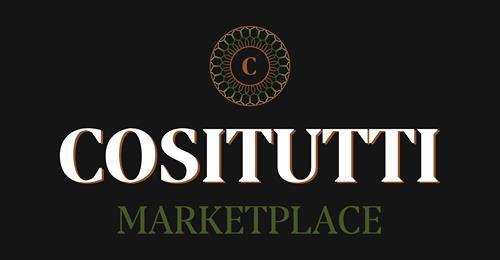

• A BRIEF HISTORY OF CHARCUTERIE
• A TASTE OF FOOD TRADITIONS
• CONVERSATIONAL EATING
• BEST BOARDS FOR CHARCUTERIE


• PREPARING A CHARCUTERIE BOARD
• SPECIAL ADD-ONS AND EXTRAS THAT TAKE YOUR CHARCUTERIE BOARD TO THE NEXT LEVEL
• GETTING READY FOR SERVICE
• INSPIRATION FROM ANTICA MACELLERIA CECCHINI
A BRIEF HISTORY OF CHARCUTERIE


SALT AND SMOKE

The history of charcuterie is a history of salting, smoking, and cooking to preserve meats driven by the desire not to let a single portion of the animal go to waste. It has been carried on in many forms through virtually every culture and evolved into a specialized trade in 15th century France. It describes the way in which butchers began grinding up, sealing and salt curing meat to increase its use and availability. The practice of serving a variety of cooked or cured meats, thinly sliced, placed on a platter, and served in a variety is the foundation of a traditional charcuterie board.

Today practically anything served on a “board” is called a charcuterie and almost anything goes when making up this popular platter. But even on a modern charcuterie board, cooked or cured meat is still considered to be the pivotal portion of the platter usually accompanied with cheese, fruit, crackers or bread and a variety of jams, spreads and sweet and savory add-ons that gives your board all the right tastes and appearance for a convivial feast.




CHARCUTERIE TODAY

A TASTE OF FOOD TRADITIONS AND NEW INNOVATIONS
Traditional charcuterie boards are one of the most authentic food experiences you can have because they reflect the artisan food products of the region and the heritage they come from. Epicurious eaters and innovative producers continue the tradition crafting new charcuterie selections with more speciality items that continue to make charcuterie such a popular style of eating and entertaining.
Edouard-Jean Dambourgez (1844-1931)

Une boutique de charcuterie - A pork butcher's shop






ITALIAN CHARCUTERIE
AFFETTATI MISTI







Every culture uses a slightly different technique for preparing charcuterie boards. In Italy that might begin with an affettati misti, a selection of Italian sliced cured meats (salumi) and salami, the ground and seasoned meat in a sausage casing. Meats like Prosciutto (di Parma or SanDaniele), mortadella with pistachios, speck, coppa or capicola, bresaola, Genoa or Milano salami, finocchiona, felino and soppressata.
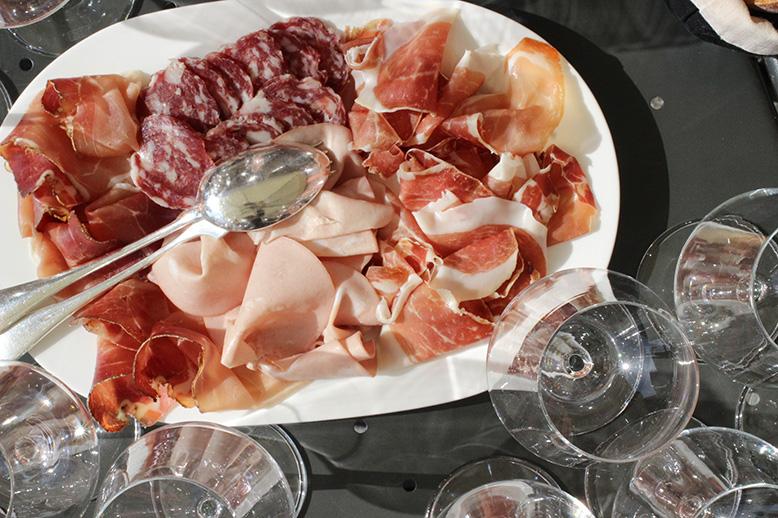
THE KING OF CHARCUTERIE MEATS







CULATELLO DI ZIBELLO DOP
Culatello di Zibello DOP, a Italian salumi from Parma, is an especially favored charcuterie selection. Lesser known than other Italian salumi, Culatello di Zibello almost never leaves its home on the Po river valley so you may have a hard time finding it in the States. In the US some salumerias make their own version of culatello but the true taste of the meat depends on a key ingredient that doesn’t travel well, the lowland Po River fog. It is said that the fog rising from the river gives the flavor to the meat.

SPANISH CHARCUTERIE

JAMÓN AND SALCHICHÓN,

Selections on a Spanish charcuterie would include chorizo, Jamón Ibérico or Jamón Serrano (similar to prosciutto), lomo (cured pork tenderloin), morcilla (blood sausage) and salchichón a mild salami-style sausage made from Ibérico pigs.


FRENCH CHARCUTERIE
CURED MEATS, SAUCISSONS AND FORCED MEATS

On a traditional French charcuterie board you would would find French jambon (salt cured and smoked), saucissons (sausage) and pâtés, mousses, rillettes (shredded, spreadable meat) or terrines.








Pâtés and terrines or forced meats are a hallmark of a French charcuterie board. Forcemeat comes from the French verb farcir meaning to stuff and refers to meat that has been finely ground and combined with other ingredients.

CONVERSATIONAL EATING


PEOPLE WHO LOVE TO EAT ARE ALWAYS THE BEST PEOPLE JULIA CHILD
Nothing brings people together like a charcuterie board. Where food becomes a social event that stimulates conversation as your guests rave about the different ingredients, their origins and history. They taste and hear comments about the meat, the cheese, the jam or honey, the artisan producers with an interesting backstory and it feels like they are participating in something more than just eating.
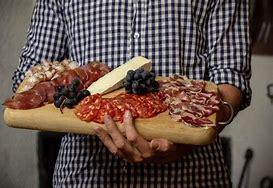
•



CHOOSING THE BOARD
THE BOARD IS THE BLANK CANVAS

A successful charcuterie gathering begins with the board. The board is the blank canvas for all the selected ingredients. The meat, cheese, addons and accompaniments once chosen need to be pleasingly and appetizingly arranged. What allows you to do that begins with the board so you will need to choose your board carefully because unless you are a culinary Jackson Pollak, just throwing the ingredients on any platter or board will end up in an unappetizing mis-mash.


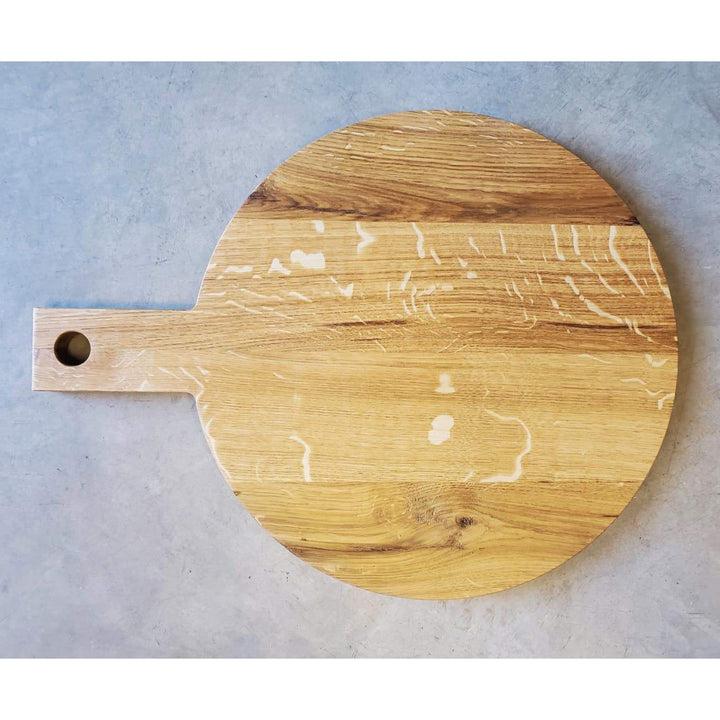





IT BEGINS WITH THE BOARD



A well-designed charcuterie board shouldn't just look good. It also needs to be made from high-quality materials and sturdy enough to support the weight of the ingredients. Not too heavy but not too light with an overall thickness of about ¾”-1” thicknches. Size matters and depends on the number of people you’re serving. In general a board that is 9 x13 inches is recommended for a standard charcuterie board. If serving a a larger crowd, a board around 20 x 12 inches is needed. The shape of the board is a design option but accessibility for serving should be considered.

IF YOU WANT TO KEEP IT AUTHENTIC

USE A HARDWOOD BOARD
According to manufacturing experts, non-porous hardwood is the best for charcuterie boards. Certain woods will absorb the smell of cheese, so that is why boards made of harder, nonporous wood are preferred. Woods such as teak, hard maple, American cherry, olive, and acacia are frequent choices.

Bamboo boards have become popular because they are eco-friendly and resist scarring from knives, so they are more resistant to bacteria than other woods and tend to absorb less moisture. Teak wood is also considered to be a good material for a charcuterie board because of its resistance to heat, bacteria and moisture. The appearance and culinary connection of olive makes it one of the most popular choices for a charcuterie board. It’s also a dense hardwood and shares a lot of the same selfhealing and microbe-resistant properties of bamboo as long as it's properly maintained.

PREPARING A CHARCUTERIE BOARD-






SAVORY - SWEET - SOUR - HARD - SOFT - CREAMY - CRUNCHY


Although meat is the foundation of any charcuterie board balancing flavors (savory, sweet and sour) is the key to a good board. It’s all about offering your guests contrasting choices.

A classic charcuterie board is not a random selection but focuses on complimentary tastes and textures. Savory
flavors are the most dominant, with a few sweet ingredients like honey, jams, dried fruits or fruit-spiked cheeses, and a couple of sour add-ons give the board all the right tastes. Spreadables, condiments (olives, peppers, tapenades) nuts and fruits (grapes, sliced apples, melon, dates, dried figs) add texture and interest following the basic rules of charcuterie boards - hard, soft, smooth/ creamy and crunchy.
•
CHOOSE YOUR MEATS FIRST

THEN YOUR CHEESE




Choose your meats first, then your cheese and then the other ingredients. When choosing your cheese, there should be a gradual progression of lightest to the strongest in terms of taste. You do not want to overpower the other ingredients on the board and you do not want to repeat the same flavors and aromas in the cheese. The same applies to the texture of the cheese. Cheese selections should always include a soft cheese, a soft triple cream cheese, a firm cheese, an aged/ hard cheese and a blue.

PREPARING THE MEAT AND CHEESE
SLICING AND TIMING


In most cases, some of the meats on your charcuterie board will have a membranous casing covering them and you'll want to remove it before serving even if it's natural. The salami should be is thinly sliced, about 1/8 inch to 1/4 inch thick. The rind should be removed from the cheese and the cheese sliced into wedges or cubes. Cured meats (prosciutto etc.) should be thinly sliced Remove the meat and cheese from the refrigerator about 30 minutes before serving and bring to room temperature. Soft cheeses like brie should be removed from refrigeration 45 minutes before service. That gives them a chance to come to room temperature and get nice and creamy. However do not let the meat and cheese get too warm (say, 68 to 70°F).



AMOUNTS AND NUMBERS


If serving 8-10 people you will need 4 types of meat, 3 types of cheese about 3 medium sized hunks of cheese and 3 baguette style breads (pre-sliced). Baguettes are traditional but crackers, fig and olive crisps or nuts breads are very nice. For 2-4 people or for a picnic charcuterie 2 types of meats,1 salami or sausage and 2 cheeses should be enough.
Plan for 3 ounces of meat and 3 ounces of cheese per person. If the board is meant to be the main course you will need 6 ounces of meat and 6 ounces of cheese per person.

BOARD ARRANGEMENT



THE BEST ARRANGEMENTS ARE ORGANIC



The best board arrangements are organic and less contrived. However it is recommended that you arrange your biggest ingredients on the board first (like a wheel of soft brie cheese). Anything too liquid or saucy serve in small bowls or even right in their jars. New and unusual accompaniments and add-ons are always culinary conversation starters. Many artisan add-ons come in attractive jars that can be used as serving pieces so leave them in their jars to let your guests see where they are sourced from. Then add the sliced and smaller ingredients around them. Keep your meats and cheeses in groups. When it comes to colors, choose to create shades of color in simple arrangements.
Less is more when arranging the ingredients. Crowding the ingredients, too much stacking or overlapping makes it hard to appreciate the ingredients and flavors may get lost in the crowd. With a dish like this presentation is a key element and like Goldilocks and the Three Bears just the right amount will make the charcuterie board just right.

•
SPECIAL ADD-ONS AND ACCOMPANIMENTS











Smoked trout or smoked whitefish spread
Castelvetrano olives
Fegatini liver mousse
Black olive tapenade
Roasted grapes
Truffle honey
Black truffle butter

Mozzarella-Stuffed Peppadew Peppers
La Tur cheese A spreadable pork salame called nduja.
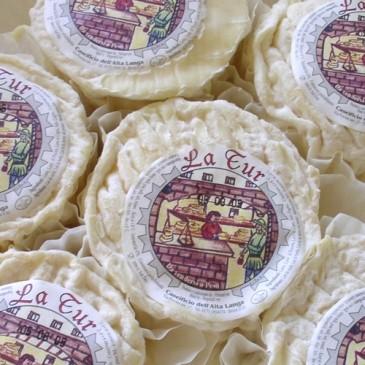
•
GETTING READY FOR SERVICE
You will need to have the following supplies on hand for service. These can be conversational starters themselves and should reflect your culinary personality, season, event or occasion.
• Elongated toothpicks for olives, cubed cheeses and other small bites
• Cheese knives
• Small bowls for jams, chutneys, spreads, honeys
• Small spoons and knives for serving
• Serving plates*
• Napkins

* an affilate link for whilch we may be compensated at no extra cost to you.





INSPIRATION


SHARING OUR FAVORITE FINDS, A RECIPE AND THE ULTIMATE ITALIAN CHARCUTERIE BOARD

FINDS




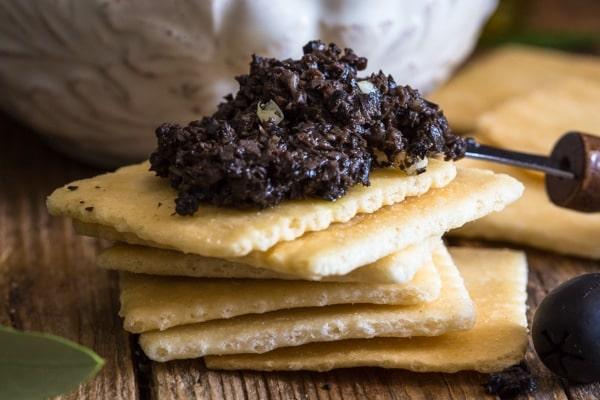

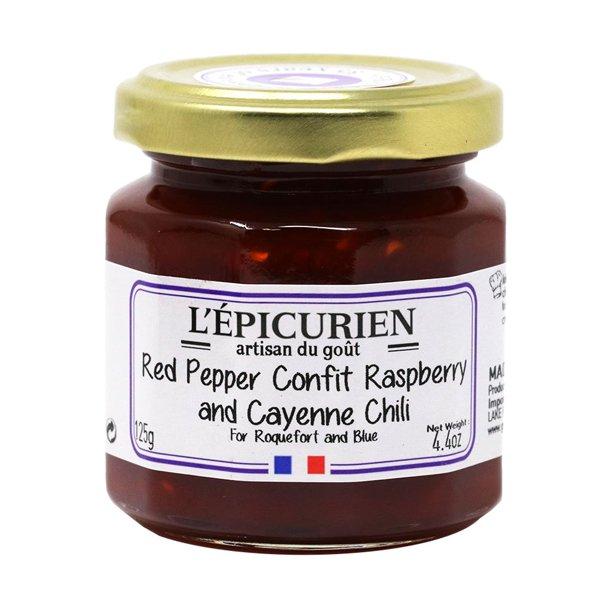

A RECIPE
1 1/2 cups of fresh whole milk ricotta
1 large egg, room temperature








1 1/2 tablespoons of shredded Parmigiano-Reggiano cheese
unsalted room-temperature butter for greasing
1/8 teaspoon sea salt
freshly ground black pepper

1 loaf of crusty bread
extra virgin olive oil for brushing bread
2 sprigs of fresh thyme for garnish
Italian Black Summer Truffle Honey
1 1/2 cup crushed pistachios
Preheat the oven to 400 degrees with the rack set on the middle-upper level. Liberally grease one small baking dish with butter. Line the inside with parchment paper so that when the ricotta rises past the baking dish it doesn’t spill over. Do this by cutting triangle corners from the parchment paper and laying one edge of the triangle in the inside edge of the baking dish. In a medium bowl, combine ricotta, egg and Parmigiano and sea salt. Spread the ricotta mix into the buttered and parchment-lined baking dish up to about two inches deep. Sprinkle the top with a little freshly ground black pepper. Place baking dish on a baking sheet and bake for 15-20 minutes until the top starts to brown. Continue browning the dip under a broiler for another minute or two. Drizzle with truffle honey and top with pistachios.
BAKED RICOTTA DIP WITH BLACK SUMMER TRUFFLE HONEY

A RECIPE





2 tablespoons unsalted butter

3 cooking apples, cored and diced finely
2 medium-sized shallots, minced
1/4 cup water
1/2 cup dried unsulfured apricots, diced finely
1/2 medium-sized red pepper, diced finely
2 tablespoons apple cider vinegar
1/4 cup red pepper confit with raspberries and cayenne
1 teaspoon yellow mustard seed

2 tablespoons of honey
In a medium-sized pot, melt the butter over medium heat and add the apples, shallots, water, apricots, and red peppers and cook until soft, about 15 minutes. Then, add the remaining ingredients and cook until syrupy. Refrigerate until needed. Will keep for a fews weeks in the refrigerator.
APPLE, APRICOT AND RED PEPPER MOSTARDA
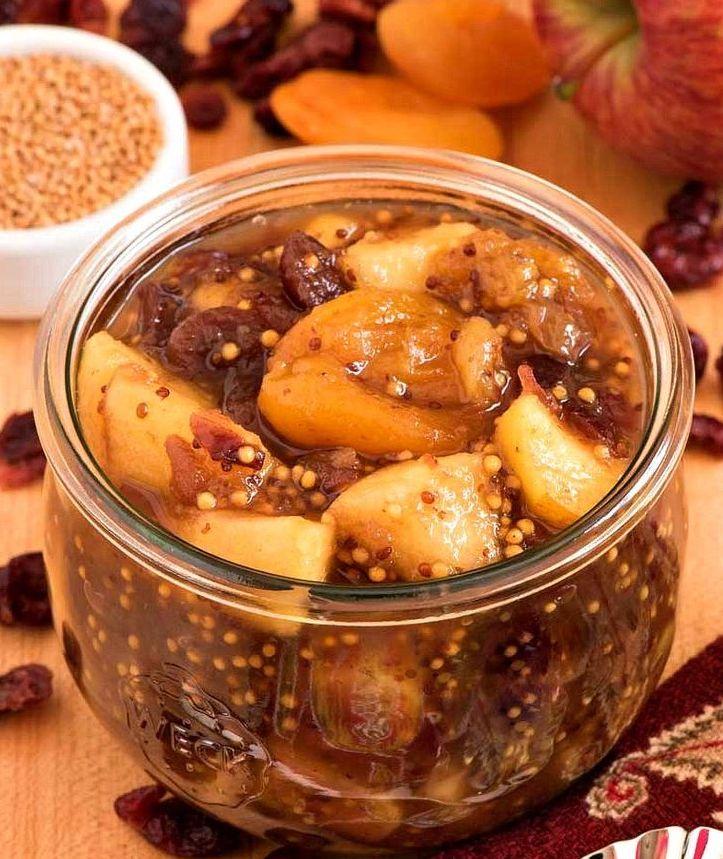
THE ULTIMATE ITALIAN CHARCUTERIE BOARD


PANZANO IN CHIANTI

ANTICA MACELLERIA CECCHINI

I’m modeling my ultimate Italian charcuterie board after an experience at Antica Macelleria Cecchini in Panzano in Chianti one afternoon late in October 2018. I was part of a Sunday afternoon meet, greet and tasting frenzy that surrounds an a gratis sampling of Dario Cecchini’s work. Like attending a gallery showing of a famous artist, fans press through the doorway of the little butcher shop located on a side street off the main piazza. They are offered a wine pour of Chianti from a traditional Italian fiasco and upon entering jostle themselves to a sideboard for a sampling of traditional Chianti salami with wild fennel pollen, lardo made with olive oil, white wine, sea salt and herbs (which Cecchini calls Chianti butter) and Tuscan porchetta that is so good it will bring tears to your eyes. The aroma of herbs, meat, oil, wine wafts like incense through Cecchini’s shop as my visit lingers late into the afternoon.
I cannot hope to duplicate the experience but every time I make a charcuterie board I remember that afternoon in October and am inspired by the master of Italian butchers






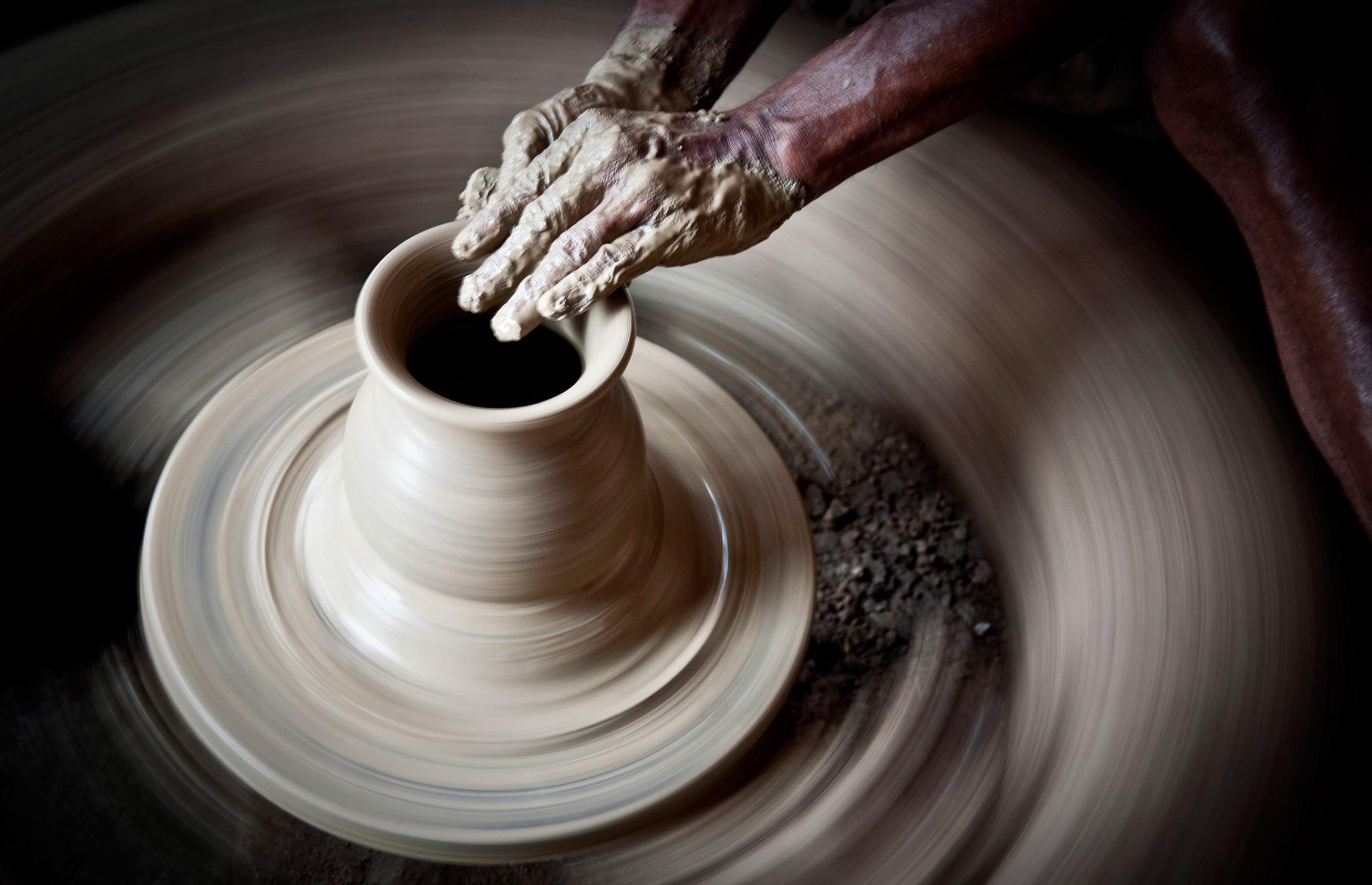
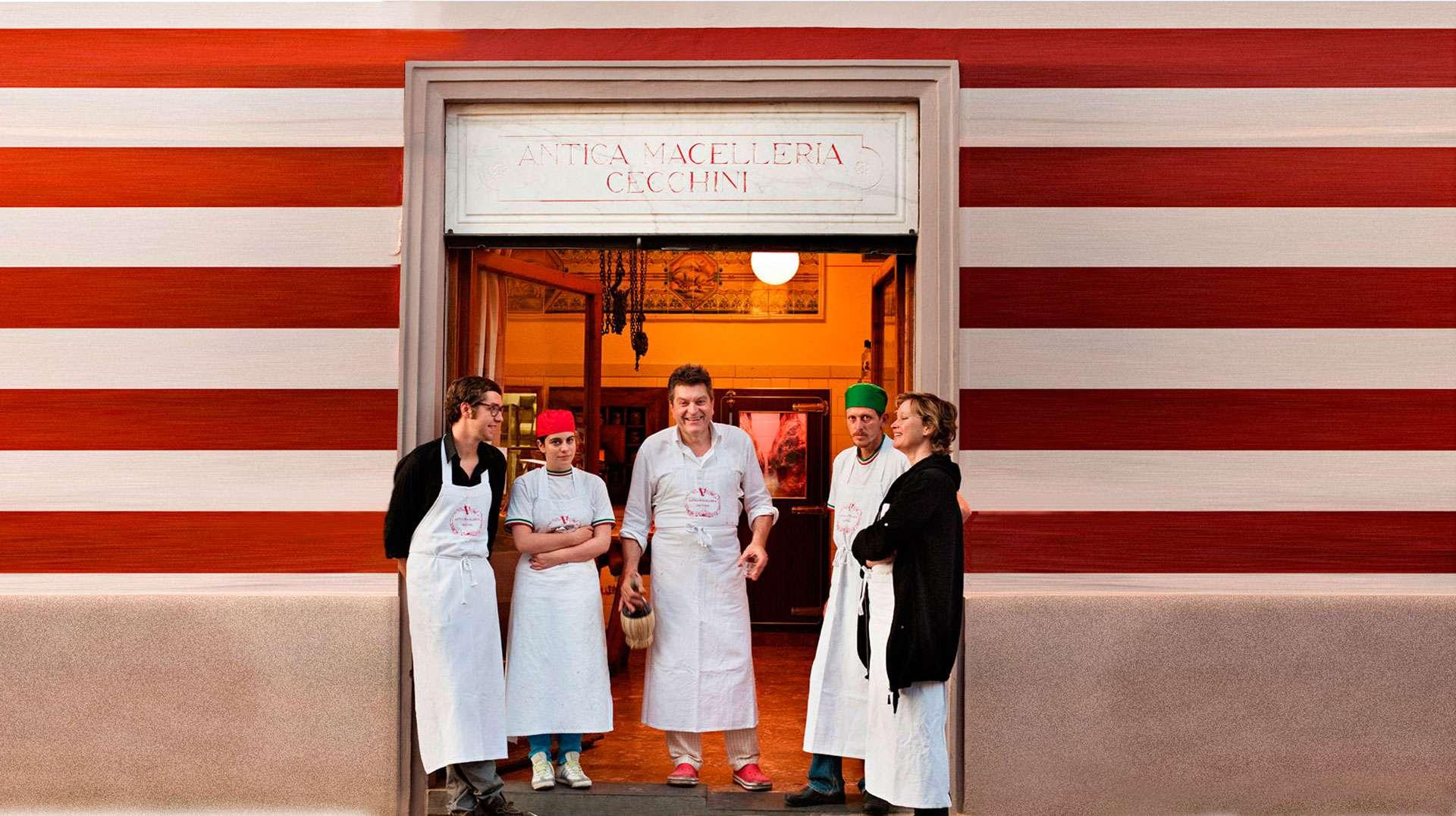
THE ULTIMATE ITALIAN CHARCUTERIE

Suggested Meats, Cheese and Add-ons
Finocchiona (fennel salami)
Tuscan Prosciutto (or Prosciutto di Parma, Prosciutto San Daniele, Culatello di Zibello)
’nduja (spreadable sausage)




Pecorino Toscano or Pecorino Tartufo cheese

La Tur cheese
Gorgonzola dolce cheese
Fruit and nut crisps and thinly sliced baguettes
Castelvetrano olives
Black olive tapenade
Red pepper and raspberry confit with cayenne
Fig and orange marmalata
Italian chestnut or truffle honey
Fresh pear slices and grapes

COSITUTTIMARKETPLACE

FROM WE LOVE THE TASTE OF LEARNING SERIES
Our presentations are designed to encourage the character of the Italian lifestyle as a model of well-being and to promote the belief that preparing a well-laid table to share and enjoy with your family and friends in a relaxed and tranquil manner is a lost pleasure that must be found again.
Pamela Marasco
CosituttiMarketPlace.com















































